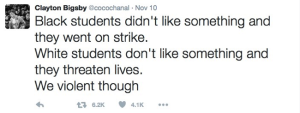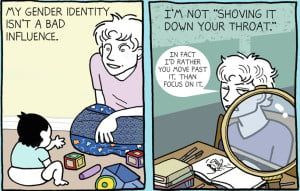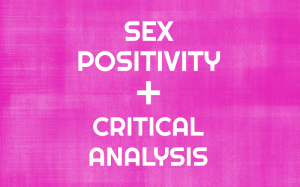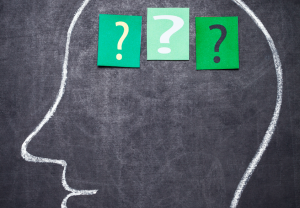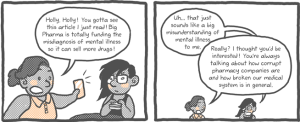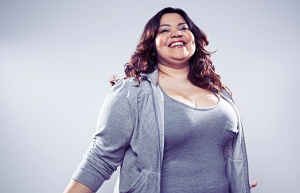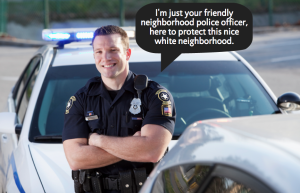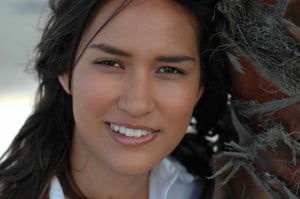If you checked out Jose Antonio Vargas’s documentary about White people, aptly titled White People, you’ll know that many White people struggle discussing race (not that some of you needed a documentary to confirm this fact).
Throw “White Privilege” into the discussion, and the awkwardness – and defensiveness – can multiply astronomically.
What is White Privilege? The reality that a White person’s whiteness has come – and continues to come – with a vast array of benefits and advantages not shared by many people of Color (POC).
It doesn’t mean that I, as a White person, don’t work hard (I do) or that I haven’t suffered (well, I have known struggle), but simply that I receive help, often unacknowledged assistance, because I am White.
Or, as Ta-Nehisi Coates writes, I “believe [I am] White.” I’ve yet to get a DNA test, which led to a surprising result for a White supremacist who thought himself 100% White.
Perhaps most indicative of the power and prevalence of White Privilege is that, though people of Color have been fighting racism since its invention, those who are most associated with White Privilege education tend to be White people: Tim Wise, Robin DiAngelo, Paul Gorski, and, of course, Peggy McIntosh, author of the 1989 article, “White Privilege: Unpacking the Invisible Knapsack.”
And I understand why Peggy McIntosh’s “Knapsack” article continues to fill anti-racist syllabi 26 years later. Her list of privileges makes the concept readable and digestible – heck, the success of Everyday Feminism is due in large part because of this listing format.
For example: “I am never asked to speak for all the people of my racial group” or “If my day, week, or year is going badly, I need not ask of each negative episode or situation whether it has racial overtones.”
Taken together, McIntosh’s list reveals a privilege she never explicitly states: the privilege to feel normal. But how odd is it that White people are the ones who so often disproportionately get the credit for educating about White privilege?
Think of it this way: Because I have always had full use of my legs, I’d be the last person you’d turn to to learn about life in a wheelchair. In fact, navigating a tour of the state capitol with a student in a wheelchair for thirty minutes taught me more about life in a wheelchair than my previous 30+ years had taught me.
Yet, when it comes to White Privilege, White people somehow become the authority.
While I have indeed learned important lessons from prominent White anti-racist educators (like the above ability-privilege analogy that I pulled from Tim Wise), here are lessons people of Color who have taught me that have changed my life – and they could change yours as well.
1. I Have the Privilege of (Generally) Having a Positive Relationship with the Police
Sure, the police who patrolled the affluent neighborhoods of my youth were an inconvenience to a few keggers and I maintain that a traffic violation from the late 90s was unfair, but I grew up thinking of the police officers as a source of safety if I were ever in danger; I certainly never viewed them as the source of danger.
In 1999, Amadou Diallo – and the 41 bullets that police officers in plainclothes discharged at this unarmed Black man with no criminal record – taught me that not all share this privilege. Diallo was for me what Michael Brown has been to some White people. Too many Black and Brown people are not safe with the police.
Not even if you are child, a lesson Tamir Rice and Dajerria Becton taught me.
Not even if you are seeking medical help, a lesson Jonathan Ferrell taught me.
Not even if you call the police for help with your mentally ill son, a lesson Paul Castaway’s mother taught me.
Not even if your back is turned, a lesson Rekia Boyd and Walter Scott taught me.
Not even if you tell the police you “can’t breathe,” a lesson Eric Garner taught me.
Not even if you have your hands up, a lesson Antonio Zambrano-Mon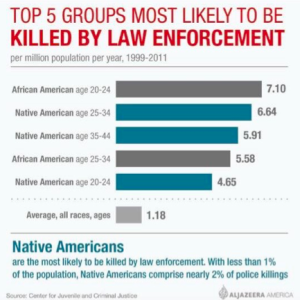 tes and Michael Brown (according to sixteen witnesses) taught me.
tes and Michael Brown (according to sixteen witnesses) taught me.
Not even if you are “safe” in custody, a lesson Tanisha Anderson, Natasha McKenna, Freddie Gray, and Sandra Bland taught me. Not even if you plead for help while in custody, a lesson Sarah Lee Circle Bear taught me.
These are just a fraction of my teachers, those whose names reached the media, which too often neglect reporting police killings of women of Color and Indigenous people.
Of course, I might not have learned any of these lessons if not for the efforts of Alicia Garza, Patrisse Cullors, and Opal Tometi, the founders of the Black Lives Matter movement, a movement that is changing White perceptions of racist policing, not to mention our entire political landscape.
2. I Have the Privilege of Being Favored by School Authorities
Kiera Wilmot and Ahmed Mohamed, both of whom were arrested for bringing science projects to school while Black or Brown, helped teach me this lesson.
Recently, one Black twelve-year-old was suspended for intimidating a White girl through his staring – staring that took place during a staring contest. Huh?
Studies confirm such mistreatment of Black and Brown students. In one, White students who reported that they committed forty crimes in a year were “as likely to be imprisoned as black and Hispanic students who reported committing just five offenses.”
In my hometown of Seattle, Black middle school students are nearly four times as likely to be suspended as White students, a reality that has attracted an investigation by the federal government.
One federal study found similar disparities start as early has preschool. Preschool.
As a parent of a White four-year-old, I can’t fathom how such heavy-handed practices would ever help my child (who recently smacked my face because he didn’t want me to leave his room at bedtime).
But because we’re White, I’m unlikely to ever receive the call from school officials that Tunette Powell recounts in her article, “My son has been suspended five times. He’s three.”
3. I Have the Privilege of Attending Segregated Schools of Affluence
That’s true, even if I’m White and poor, a demographic rarely forced to live in “concentrated poverty.” If you are Black and poor, however, you are nearly 19 times more likely to live in concentrated poverty than poor White Americans.
When I was growing up, Brown v. The Board of Education was more than history; it was a value. Civil Rights icon Thurgood Marshall taught me this lesson. And research shows that both people of Color and White people benefit from integrated schools.
Even though we “ended” segregation in 1954, segregation is the norm in 2015; integration has long ago been forced from the table of education reform.
Using fear tactics and coded language, White people continue to be the barrier to any attempt at integration, a fact that This American Life reminded us of last summer with its must-listen, two-part series “The Problem We All Live With.”
In Seattle, it was a White parent, unhappy she couldn’t get her daughter into a nearby (recently renovated) high school, who shut down a district’s efforts to integrate its public schools – which, not ironically, many White families had already fled because of previous integration efforts.
Shit, in “progressive” Seattle, people of Color can’t even find a safe yoga class for POC without a White person crying discrimination.
4. I Have the Privilege of Learning about My Race in School
In response to White politicians’ outrageous shutting down of Tucson Unified School District’s Mexican American Studies program – a program that dramatically reduced educational disparities for Latinx students – a movement to increase ethnic studies is growing, winning victories in districts that are predominately of Color, such as Los Angeles Unified and most recently Oakland Unified.
Until White America joins the fight, the lesson that educator and activist Jose Del Barrio teaches below will continue to hold true:
Unfortunately, in too many schools and districts, ethnic studies is not even an elective.
5. I Have the Privilege of Finding Children’s Books that Overwhelmingly Represent My Race
And the whitewashing of curriculum extends into bookstores (less so into libraries) where I live. And it’s not because I’m a shitty shopper (though I am).
In a New York Times op-ed, Walter Dean Myers taught me that “of 3,200 children’s books published in 2013, just 93 were about black people.” And that doesn’t mean the remaining 3,107 are filled with people of Color of various races.
In 2013, only 8% of children’s books were written by or about people of Color.
On my many trips to Seattle bookstores, I find the few such stories that do exist tell the stories of Civil Rights icons and trailblazers, such as Jackie Robinson and Rosa Parks.
And while these stories are important and inspirational, I have not yet been ready to teach my four-year-old that people of Color have been normally oppressed; I just want him to view the faces of people of Color as normal.
Fortunately, the #WeNeedDiverseBooks campaign we can join has emerged to take on this privilege, which is actually a curse if we want our children to interact with others based on reality, not stereotypes.
6. I Have the Privilege of Soaking in Media Blatantly Biased Toward My Race
Everyday Feminism writer Maisha Z. Johnson deepened my understanding of this bias that rears its unwelcome, White-loving head, for example, in pictures that humanize White killers while simultaneously dehumanizing victims of Color:
Two sets of pictures, one with and one without mugshots – for the same crime, covered by the same reporter (on the same day) – further illustrate this bias:
And these biases are besides a media that, according to Vanity Fair, continue to be overwhelmingly whitewashed (not to mentioned malewashed, straightwashed, and youthwashed).
If you are still not convinced, check out actor Dylan Marron’s website, Every Single Word, through which the Venezuelan American has edited mainstream movies so that only the characters of Color speak. Even the two-hour-and-19 minute-movie, Noah – set in a region filled with Brown people – is reduced to just eleven seconds.
More proof is just one Google image search away. Google “beauty” and count the people of Color. Here’s what my search found (and notice the glaring lack of Idris Elba images):
And if the media are not blatantly biased, remember that they are covering a blatantly biased country, one that views the epidemic of heroin, used overwhelmingly by White people, as a “health problem” instead of a “crime problem.”
Apparently, the addictions of White people merit a “gentler war on drugs,” not the three-strikes laws and mandatory minimums that have devastated Black and Brown communities.
7. I Have the Privilege of Escaping Violent Stereotypes Associated with My Race
Given that, throughout this country’s history, White people have been responsible for unspeakable atrocities against people of Color – genocide, forced migrations, lynchings – what a set up that violent stereotypes attach to people of Color and not to White males like me. Or the three White males recently charged with plotting to bomb “black churches and synagogues as part of a race and hate war.”
Or these two, pictured above, who were arrested for threatening the lives of Black students at the University of Missouri, students who had dared to protest rampant racism on campus.
The Huffington Post’s Julia Craven recently taught me that, since September 11th, White supremacists (who tend to be White) have perpetuated more terrorism in the United States than any foreign threat.
The Southern Poverty Law Center connects nearly 100 killings to a single White supremacist website, Stormfront (whose users also tend to be White).
And though I share a similar skin color as these violent White people, I move about free from violent stereotypes – and I haven’t even brought up all the famous White serial killers!
Meanwhile, Homeland Security misdirects its resources on the surveillance of the Black Lives Matter activists who dare to protest rampant racism in our country.
8. I Have the Privilege of Playing the Colorblind Card, Wiping the Slate Clean of Centuries of Racism
Another set up that benefits White people. And I don’t mean to sound judgmental. If we have espoused colorblindness, it’s because we have been taught to do so.
However, countless students of Color have taught me a different lesson: Race is a fundamental part of their identities and deserves to be acknowledged and appreciated.
Yes, race is a social construction based on physical differences that, genetically speaking, make as much sense as classifying people by fingerprint pattern and blood type.
Nevertheless, White people have been using the invention of race, through policy and legislation, to systematically benefit White people from as early as the colonial era.
And when overt racism (finally) became socially unacceptable – after, of course, vast inequality had become deeply entrenched in every aspect of political, social, and economic life – we switched to colorblindness, making it virtually impossible to address this societal inequality.
It also makes it very difficult for White people to examine their implicit biases, like the ones that associate lighter skin with intelligence. Or the ones that prescribe less pain medication for Black and Latinx children than White children in “severe” pain. Or the ones that prefer White-sounding names when it comes to school discipline, job applications, and government inquiries.
And, of course, who pays the heaviest price?
Again, what a set up, one that clearly benefits White people, though it does lead to some hypocrisy:
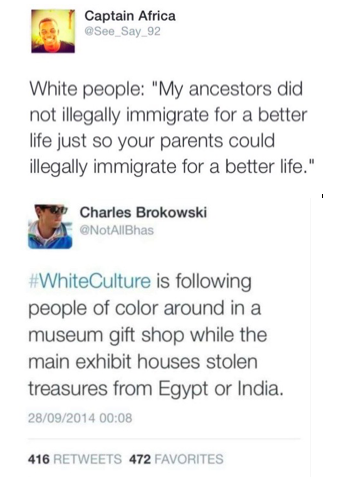
9. I Have the Privilege of Being Insulated from the Daily Toll of Racism
Then I watched Color of Fear, and Victor Lee Lewis taught me a new reality (as did Lee Mun Wah, who made film).
And while it’s not the job of people of Color to educate White people on racism, it’s no longer difficult to find useful resources that teach about the toll Victor Lee Lewis powerfully describes above.
10. I Have the Privilege of Living Ignorant of the Dire State of Racism Today
Shaun King, a prominent voice of the Black Lives Matter movement, set me straight on November 10, 2015.
We are living during a “Civil Rights Movement.” Will you spend it enjoying the privilege to ignore the movement – or will you join it?
[do_widget id=’text-101′]
Jon Greenberg is a Contributing Writer for Everyday Feminism. He is an award-winning public high school teacher in Seattle who has gained broader recognition for standing up for racial dialogue in the classroom — with widespread support from community — while a school district attempted to stifle it. To learn more about Jon Greenberg and the Race Curriculum Controversy, visit his website, citizenshipandsocialjustice.com. You can also follow him on Facebook, Tumblr, and Twitter @citizenshipsj.
Search our 3000+ articles!
Read our articles about:
Our online racial justice training
Used by hundreds of universities, non-profits, and businesses.
Click to learn more








